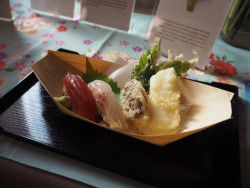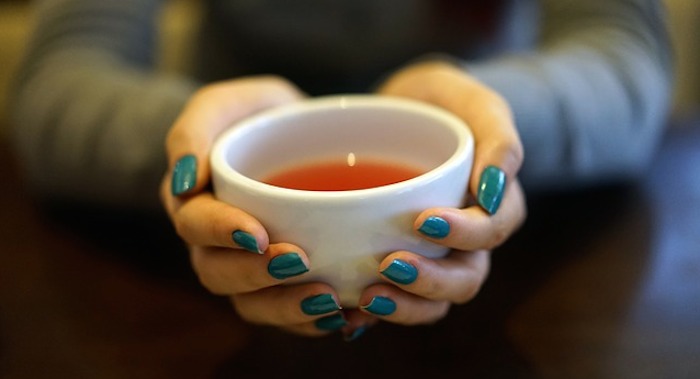
Winter in Tokyo can be summed up as colder inside than out. It’s a rough revelation to reconcile, but it’s true—though the temperature outside rarely drops below 0ºC, Tokyo winters feel absolutely frigid. There are, however, ways to make your house feel less hyperborean.
1. Heaters
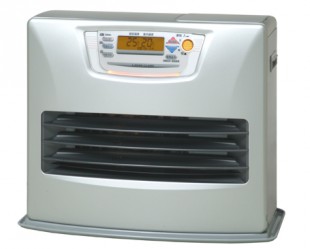
(Photo via matome.naver.jp)
From the aircon on your wall to the myriad space heaters available in stores, this one is pretty obvious. But not all heaters are created equal. Consider speed of heating, size of room, cost per hour, heater stability and safety before you buy.
Also check your lease, as some landlords don’t allow kerosene heaters. And once you do buy, maintenance is key. Clean your aircon filters, keep grit out of your kerosene heater—and never, ever fill a kerosene heater with anything but kerosene, and keep hot-surfaced and unstable heaters out of reach of pets and children.
One more note about heaters: they dry the air something fierce. Add some moisture by using a humidifier, or go the DIY route by placing open bowls of water or hanging damp towels around rooms being heated. Sure, moist air works against heating, but your body will thank you for the hydration.
2. Nature
Even in the depths of winter, nature can be your friend. Throw open those south-facing windows—or at least the curtains—while the sun is shining and let the warmth in. Close them up tight—curtains, too—once the sun moves on, and not only will you get some extra warm air, but it’ll be fresh and clean.
3. Destroy Drafts

(Photo via Pixabay)
Doors and windows are great until they start leaching the heat out and letting the cold in. Make love-hate relationships a thing of the past with bubble wrap/window insulation (nuku nuku bōdo or sutoppu paneru) to add a precious extra layer between outside and in; weather stripping (sukima tēpu) to seal any leaks around not quite tight-fitting doors and windows; door sweeps (doa shitabu shiiru tēpu) to keep cold air from sneaking in at the foot of doors; and for the super-motivated and crafty, pelmets, contraptions that fit over curtain rods and butt up against the wall above windows to keep cold air from slithering past your curtains. All it takes is a trip to a home center and a bit of free time.
But doors aren’t always the enemy—as long as you remember to shut them. Though between-room doors might seem (and occasionally are) paper-thin, they help prevent heat escape, so keep doors between rooms closed.
4. Curtains
A nice set of curtains is hard to find, so it’s understandable if you’re attached to those gauzy, stylish curtains you paid a mint for. But as noted above, windows are your enemy when it comes to heat loss, and light-as-fairy-wings fabric is not helping. Thick winter or quilted curtains combined with bubble wrap is the way to go to keep that finagling, fissure-finding north wind from sneaking in. Just remember to give them a shake and airing on sunny days—they’re dust magnets.
5. Curl Up Under the Kotatsu
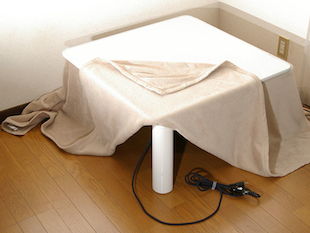
(Photo via Wikimedia Commons)
Heated tables: quite possibly the pinnacle of human invention (alongside heated toilet seats). Kotatsu are a fantastic, economical choice for quiet nights home. They’re best used in conjunction with a warm sweater and hot beverage.
6. Heated Goods
Can’t afford heated flooring? Buy a heated carpet! Hate crawling into bed with ice-cold covers? Heat things up with an electric blanket or heating pad for a few minutes before hopping in.
Electric blankets get a bad rap, but there’s really no need to keep them on all night anyway. Once your bed is warm, turn it off and let your body heat and a good set of blankets do the rest.
7. Move
…around, that is. Go for a walk, dive into the DIY at-home workout revolution, bust out a burpee or two—any form of movement will get your blood flowing and warm you up. Just remember to towel yourself down if you break even a smidgeon of a sweat.
8. Soak Yourself Hot

(Photo via Pixabay)
Yet another “when in Rome…” point. An evening shower, unless ridiculously long, just doesn’t have the same warming effect that steeping yourself up to your neck does. And don’t make the mistake of wandering around semi-clothed while your body steams away all that residual heat—hop in your pajamas and right into bed, and let that warmth carry you through till morning.
9. Sleep Snug
Splurge on some proper winter bedding—fleece sheets, thick, fuzzy blankets, and a fluffy duvet will make a big difference. Throw in an extra futon mat and a sheepskin (real or faux) and you’ll be sleeping pretty. Up the warm-factor even more by using a yutampo to keep your toes toasty. Though hot water bottles may have you conjuring up images of illness or a past century, they’re very much alive and well in Japan—and ridiculously cute.
10. Hot Food, Hot You
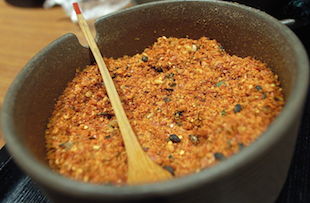
(Photo via Wikimedia Commons)
Think tōgarashi is just for flavor? Not quite. A few shakes into your miso soup and you’ll be able to lower the thermostat a few degrees. Speaking of soup, have a cup or two at mealtime to warm your body from the inside out. Or break up the day with hot beverages. We’re lucky in Japan to have hot options in vending machines—and that includes soup—so take advantage. And remember that hot beverages with lids are multipurpose—they make great hand warmers.
Then there’s always hot pot, or nabe. Not only does the heat from the portable stove warm your room, the steam coming off your meal adds much-needed moisture to the air. And, as mentioned before, all that hot liquid warms up your insides.
Shut off the heater, close all doors, and sit back with quite possibly the most economical and delicious heating option known to humankind.
Bonus Tip
Dress for the Weather—Even Indoors

(Photo by Helen Langford)
This seems simple, but it requires overcoming preconceived notions that hats and thermal underwear are outdoor wear. That line of thinking came in with central heating, which sadly, you probably don’t have.
Deal with it (focus on the savings—precious heat isn’t cheap), and dress appropriately. Long johns, thermal undergarments, wool and fleece are all your friends, and layer, layer, layer! Wear a hat on cold nights, and slippers with thick soles around the house (but not on the tatami). Acquire a quilted housecoat (hanten) or actually wear that sweater your mom knitted you. Plaster your undershirt with hot pads (tsukae sute kairo, or just kairo for short).
Just remember that dressing for the weather inside might very well mean you’re overdressed for outside. Naturally.

